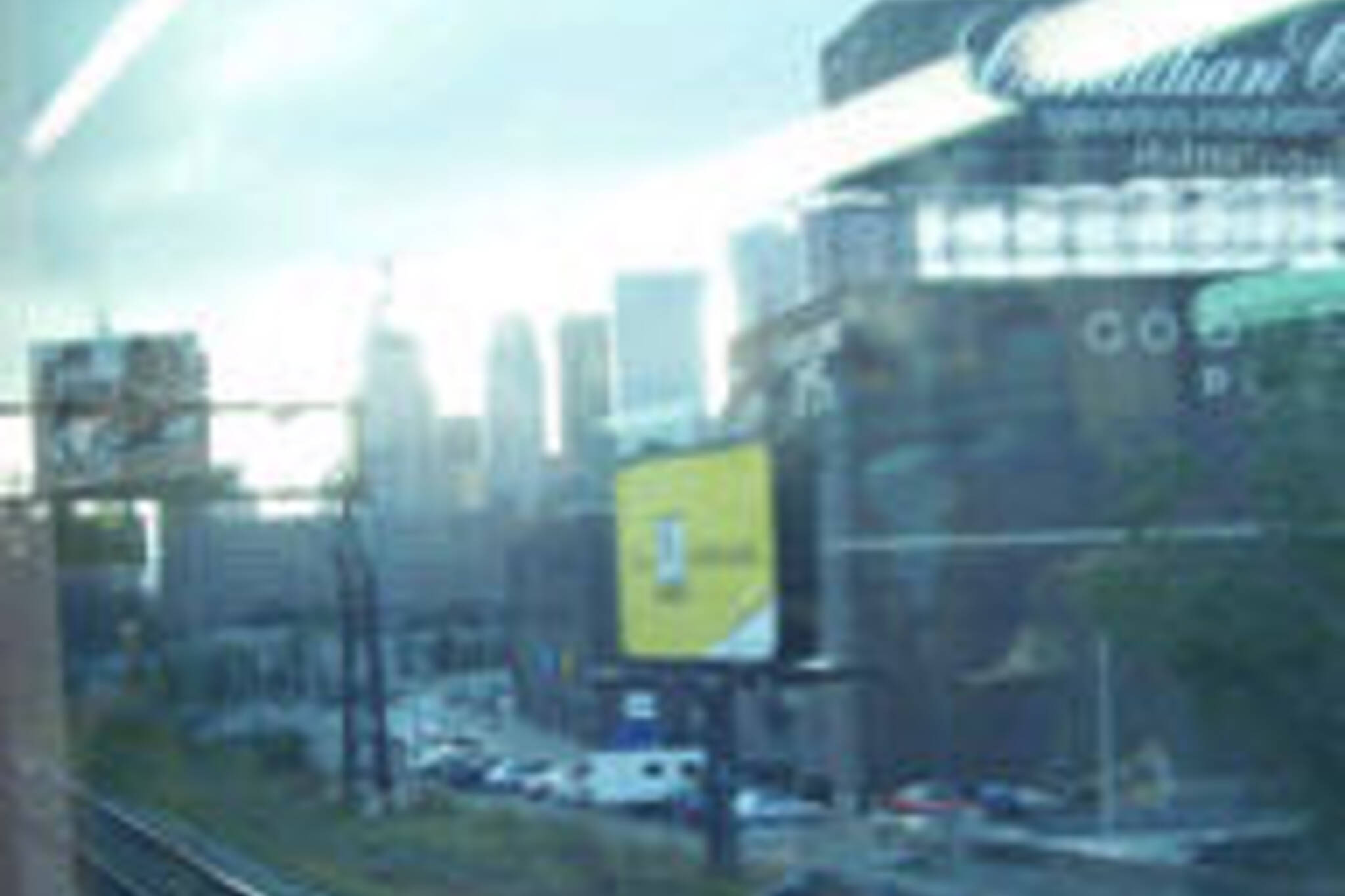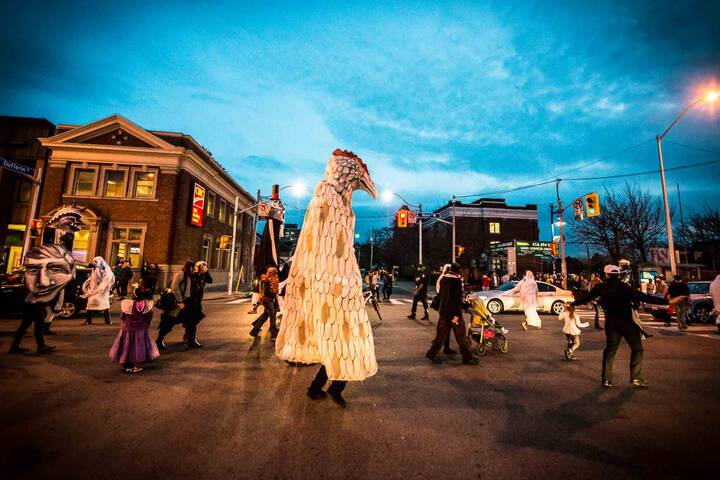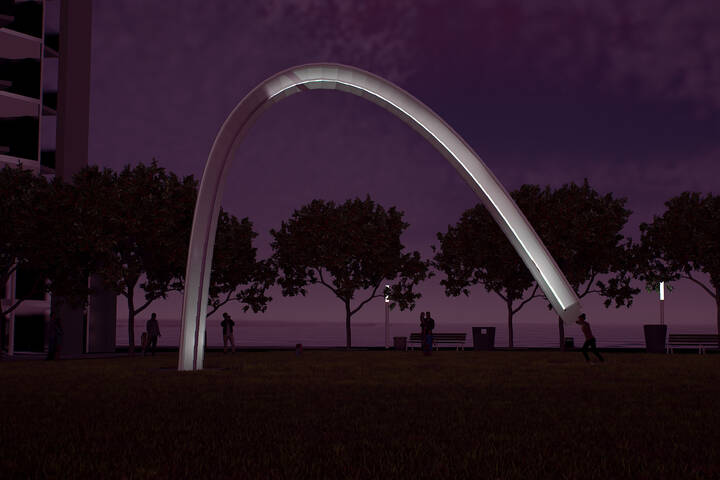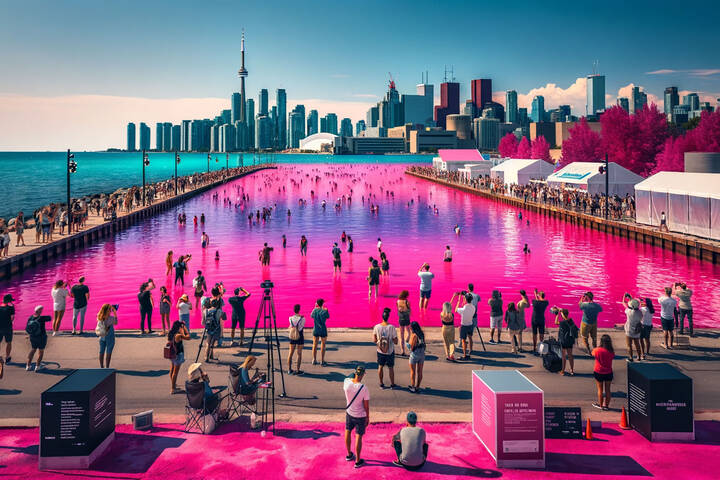
Conceptual Advertising
With regard to the debates on right now with regard to posters and public space, I thought maybe I should share some thoughts I had last evening with regard to public space and culture. Not so much about posters, but advertising versus public art, like the Ferris wheel on the Harbourfront last summer.
To begin with, I want to borrow Simon Houpt's report on The Gates, on now in New York's Central Park. It was in yesterday's Globe and Mail (the article is moneywalled, but it you want to pay, it is here, although I'm gonna try to excerpt the best).
"The most enlightening comment I've heard so far about The Gates came from a man who had no idea what it was," writes Houpt, "I don't mean he couldn't parse the meanings of Christo and Jeanne-Claude's 7,5000 five-metre high doorframes hung with fabric around Central Park, or that he didn't know whether to call it conceptual art or environmental art or an installation. No, this guy didn't even know it was art. [...] He'd somehow missed all the pre-event press coverage. So as he gazed northward at the thousands of orange shower curtains flapping in the wind, he turned and asked me, 'Are they advertising that fabric?'Christo and Jeanne-Claude call their piece 'interventions' because they intrude, or impose themselves and their works, on public spaces. This apparently freaks us out. [emphasis mine] We're used to one very specific sort of intervention: commercial ones, otherwise known as advertisements. Indeed, many visitors to Central Park have quipped that it's a shame the artists don't accept sponsorships, since the nylon orange is a perfect match for the corporate colours of Home Depot". [emp. mine]
I would like to now declare art officially over. That's the temptation, but of course I shouldn't. Nothing really ever ends, it just evolves into new forms. One of the things I hate about the discourse surrounding contemporary art and its theories is the feelings of terminality. In the 1980s thinkers went to town declaring the end of this and the end of that. From Danto to Fukuyama, suddenly you and I and everyone else are living in a perpetually post world, as if the Boomers were full of apocalyptic messiahs, for whom all history came into being.
Are we supposed to be reveling in our 'dreadful freedom' the keywords of existentialism? Saul reminds us in The Doubter's Companion (sorry I'm bringing him up again, it's just that I'm in love with him) that existentialism is an ethical philosophy, which emphasizes that we are responsible, and should be judged on, our actions. 'We are what we do, not what we intend', he writes, and it's obvious that within an existentialist framework, The Gates are an ad. Christo, with his 21M budget, is advertising 'this isn't advertising'. Lars makes this point in his posting (linked to above, but here again).
One of the things I found really interesting about the advertising industry, five years ago after No Logo came out and I'd begun to read it, was how I'd just gone through Canada's premiere conceptual art school, and learned all about the art of ideas, and here were ads which were successfully 'colonizing' our mental space. Artists are trying to shake up your perceptions and plant ideas in your head, and yet, if only they had the budget. Conceptual artists are so financially outgunned that they have no voice in this culture, so that even when the occasional big budget artwork gets displayed, it's not even perceived as art, functioning as an ineffective adbusting. This isn't unique to New York, or The Gates.
Last summer, when the Power Plant was exhibiting the car-ferris wheel, Sally McKay reported overhearing this conversation: "I went down to the show on the street car and a whole posse of little ballerina girls got on at the bottom of Spadina. As we pulled up to the Harbourfront stop one turned-up-nosed-nymph said to another 'Why make a ferris wheel for cars?' Without pause or blink or taint of scorn the second replied 'Promotion.'" (the original was a reply to a post by Jennifer McMackon).
There's also Montreal's Roadsworth case, where the city is trying to bust him for vandalism and for 'distracting' drivers, as if the naked ladies on billboards everywhere weren't distracting already. "The Gates is confusing some people and causing a few to foam at the mouth," Houpt writes, "Andrea Peyser, one of the many right-wing columnists at the New York Post and a woman who gets angry before she wakes up, declared the piece to be, 'the artistic of equivalent of a yard that's been strewn with stained toilet paper by juvenile delinquents on Halloween'. [or, it's the equivalent of some crackers] A number of people I spoke with about the piece who described themselves as strong conservatives echoed her comment, saying they didn't approve of public spaces such as the park being used for an art exhibit."
Houpt goes on to comment that Times Square is the most famous public space in the world that's devoted to advertising, one that was renamed in 1904 to promote the New York Times moving its headquarters to Long Acre Square a century ago. He notes that the City Council passed a resolution requiring the ads there to be brash and bold. When I went to the Times Square for the first time, I found it as an advertising space absolutely pointless: it was so overwhelming, to this day I can't remember which ads I saw.
I would though, be able to imagine some future recreation of Times Square circa 2000, which could be an equivalent of visiting today's baroque cathedrals ... just overwhelming image and details absent the context by which we understand it as something to ignore. What I'm suggesting is that in the long run, as a measure of what this culture is about, it is not our artworks that are as interesting as it is our adverts. Which is depressing I admit, but what alternative are artists offering, when they can't even break out of that paradigm? Perhaps the reason the public is so committed to painting and drawing, (the old, 'do you paint?' conversation when you tell someone you're an artist) or 'more traditional forms', is because advertising has never co-opted it successfully.
When Jonas Mekas gave a lecture a couple of years ago, as part of the Ryerson Kodak Lecture Series, he complained about corporate culture, saying he wanted to celebrate the small, those who embrace failure in everyday life, and those who don't want to make history. I myself hate the 'failure discourse' that's grown up over the past few years, because it's pretty retarded ('I'm gonna be successful by failing', WTF?) but I was sympathetic to what he was saying. He was bitching about this fashion of mega-art big budget stuff. I can see now that artists are merely trying to compete with ads on their own terms, equally big-budget, equally empty of profundity. It gives me more security to continue making small paintings and drawings, since if I had 21 M dollars, I'd try to do something more socially significant than 'redecorate a bike path'. And, it reminds us that when you can't compete with ads on their own terms, a photocopier can be just as effective. If the city wants to get rid of posters, they should pass a by-law requiring billboard companies (like Viacom, which owns everything) to donate the space for a certain percentage of the year.
Coming out of that lecture, I was immediately confronted with Toronto's pathetic attempt at a Times Square, that of Dundas. The debate is valid, in my perspective, in that I don't mind messy poles, it makes me feel that I'm walking in a living city. It's 21million times better than the waste of money that the redevelopment on Dundas represents. The posters, and the debate, tell me that while advertising may have co-opted the imaginations of many people so that public art projects are confused with them, there is a percentage of people for whom that hasn't happened, and that's the city's artists. While ad agencies have tried to even co-opt graffiti as well with their murals (which have the double effect of usually being aesthetically pleasing, so I don't mind them as much as I do billboards) their work will never be confused with advertising.
Latest Videos
Latest Videos
Join the conversation Load comments







